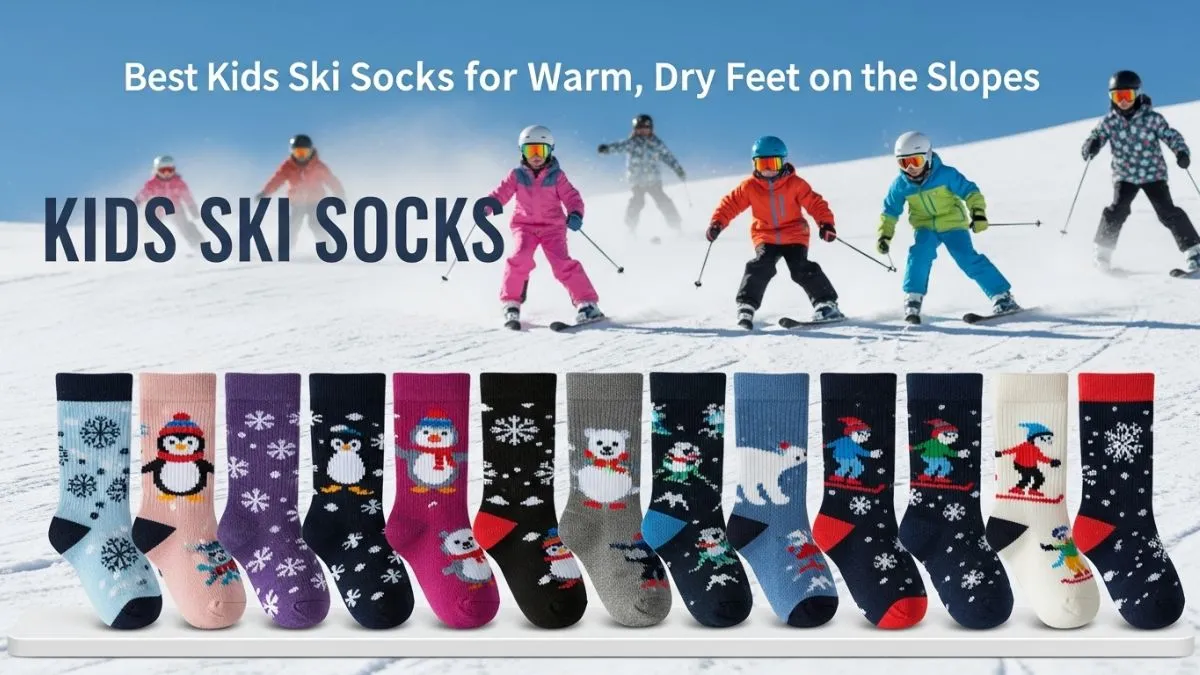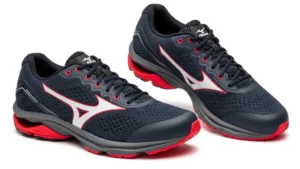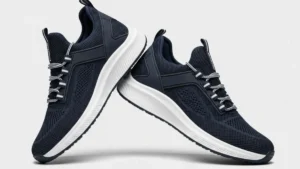
Why Regular Socks Won’t Work for Skiing
Regular socks can ruin a ski day. Cotton and casual socks soak up sweat, lose warmth fast, and bunch up inside boots. This leads to cold feet, blisters, and a lot of complaints. Ski-specific socks are designed to stay dry, stay put, and keep kids warm, even after hours on snowy slopes.
The Problem with Cotton and Casual Socks
Cotton absorbs moisture like a sponge — and holds onto it. Once wet, it loses all insulating power. When kids ski in cotton socks, sweat and snow quickly lead to damp feet, which turn cold fast. Cotton also dries slowly, so once they’re wet, they stay wet. That means discomfort sets in quickly, especially in freezing temperatures.
Most casual socks are also too short, too thick in the wrong places, or lack the structure to stay up. They slip, bunch, or wrinkle inside ski boots, which causes rubbing, irritation, and eventually blisters.
Why Kids Need Ski-Specific Socks
Ski socks are built for one job: to perform under pressure in boots, snow, and sweat. They’re made from materials like merino wool or performance synthetics, which pull moisture away from the skin and help regulate temperature.
They also have:
- Reinforced toes and heels
- Shin padding for boot pressure
- Elastic zones to prevent sliding
The fit is snug but comfortable, so kids can move naturally without their socks slipping or bunching.
You Might Also Like:The Running post
Risk of Cold Feet, Blisters, and Soggy Days
Once socks get wet or slide around, the fun ends. Cold feet mean shorter ski sessions. Blisters mean pain with every step. And soggy socks don’t dry fast — especially not in a ski lodge or cabin. If your child’s first ski experience ends in discomfort, it’s hard to convince them to go back.
Ski-specific socks are a small upgrade with a big impact: they help kids stay warmer, go longer, and enjoy the day instead of dreading it.
What to Look for in the Best Kids Ski Socks
The best kids ski socks are warm, breathable, snug-fitting, and built to last. Look for moisture-wicking materials, light-to-medium thickness, and padding in high-friction zones. A proper ski sock won’t bunch, slip, or trap sweat — it’ll keep your child’s feet warm, dry, and comfortable all day long on the slopes.
Fabric Materials – Merino Wool vs Synthetic
Merino wool is a top choice because it’s naturally warm, soft, and odor-resistant. It insulates even when wet and is gentle on sensitive skin. Synthetic fibers like polyester or nylon dry faster and offer better durability, especially in high-wear areas. Many high-quality socks use a blend of merino and synthetic to get the best of both worlds.
Choose merino-heavy blends for warmth and comfort. Go synthetic-heavy if your child tends to sweat more or if you’re washing socks frequently during a trip.
Moisture-Wicking and Breathability
Feet sweat — even in snow. A sock that doesn’t wick moisture quickly becomes cold and uncomfortable. The best kids’ ski socks pull sweat away from the skin and allow it to evaporate.
Look for socks labeled with terms like:
- “moisture-wicking”
- “breathable mesh zones”
- “quick-dry performance”
These features help maintain consistent warmth without overheating.
Sock Thickness – Less Is Often More
Thicker doesn’t mean warmer. In fact, bulky socks can restrict circulation inside tight-fitting ski boots, which makes feet colder. Modern ski socks are engineered to be thin but warm, allowing a better fit and better boot control.
Light to medium thickness works best. Save ultra-thick socks for lounging — not for skiing.
Fit Matters – No Bunching, No Slipping
If the sock slips down or bunches up, it will rub and cause blisters. Kids ski socks should have a snug, second-skin fit that stays in place without cutting off circulation.
Look for:
- Elastic arch support
- Contoured heel pockets
- Over-the-calf length
These design choices help socks move with the foot and stay in place during skiing.
Cushioning in Key Zones (Shin, Heel, Toe)
Ski boots create pressure points, especially on the shin and around the heel. That’s why good ski socks include strategic cushioning — not thick padding everywhere.
Key areas to check for:
- Shin padding (to reduce boot bite)
- Heel & toe reinforcement (for durability and warmth)
- Ankle support (optional but helpful for young learners)
Too much padding can bulk up the boot fit, so focus on targeted zones only.
Seams, Stretch, and Durability
A flat seam — or no seam at all — prevents irritation, especially around the toes. Reinforced stitching and flexible fabric blends help the socks stretch without losing shape.
Features that increase long-term wear:
- Reinforced toe/heel construction
- Lycra or spandex stretch zones
- Machine-wash durability
Kids grow fast, but quality socks will last through a full season (or more if passed down to younger siblings).
Top 7 Best Kids Ski Socks for 2025
Not all kids’ ski socks perform the same — these seven stand out for warmth, fit, and durability. Whether you want merino softness, lifetime warranties, or budget-friendly packs, this list covers the best ski socks for kids in 2025 based on real use, parent reviews, and proven comfort in the snow.
1. Smartwool Kids’ Ski Light Cushion OTC
- Material: 56% Merino wool, 41% nylon, 3% elastane
- Why it’s great: Smartwool is known for soft, itch-free merino wool that stays warm and dry. This light cushion version offers excellent temperature regulation and comfort without bulk.
- Ideal for: All-day ski trips, kids with sensitive skin
- Pros: Flat seams, high breathability, stays up well
- Cons: Pricier than most
2. Darn Tough Kids OTC Midweight Socks
- Material: 52% Merino wool, 45% nylon, 3% Lycra®
- Why it’s great: Built like adult performance socks, Darn Tough’s kid version includes their famous lifetime warranty. Durable, warm, and tight-knit with seamless construction.
- Ideal for: Frequent skiers, aggressive play
- Pros: Extremely durable, lifetime guarantee
- Cons: Slightly tighter fit may not suit wider calves
3. Burton Youth Weekend Two-Pack
- Material: Acrylic/polyester/nylon/spandex blend
- Why it’s great: A budget-friendly pack with great performance. Fun prints, solid warmth, and decent moisture control make it a parent favorite.
- Ideal for: Beginners, weekend trips, families with multiple kids
- Pros: Affordable, comes in a pack, fun colors
- Cons: Acrylic isn’t as breathable as wool
4. Wigwam Snow Junkie Youth Sock
- Material: Synthetic blend with insulation and stretch
- Why it’s great: An American-made, reliable ski sock with a plush feel and a generous fit. Known for comfort and warmth, though it’s bulkier than most on this list.
- Ideal for: Cold conditions, snow play
- Pros: Extra soft, made in the USA
- Cons: May be too thick for snug-fitting boots
5. Icebreaker Kids Ski+ Light OTC
- Material: 53% Merino wool, 45% nylon, 2% elastane
- Why it’s great: Icebreaker uses high-quality merino for a light yet warm sock that holds up well after many washes. Light cushioning and seamless design boost all-day comfort.
- Ideal for: Active skiing, long wear
- Pros: Premium fabric, excellent moisture control
- Cons: Higher price point
6. Eurosocks Junior Ski Supreme
- Material: Microsupreme® acrylic and nylon
- Why it’s great: These performance socks are engineered with advanced synthetic fibers, offering tight support and compression zones. They’re quick-drying and feature antimicrobial properties.
- Ideal for: Kids who sweat a lot or need more foot support
- Pros: Great ventilation, odor-resistant
- Cons: Less natural feel than wool socks
7. Bridgedale Kids Ski Sock
- Material: Merino wool blend with synthetic reinforcement
- Why it’s great: Bridgedale balances warmth, padding, and fit well. Known for their durability and reinforced zones, these socks can last through multiple ski seasons or hand-me-downs.
- Ideal for: Growing kids, hand-me-down gear
- Pros: Long-lasting, snug fit, reinforced in key areas
- Cons: Limited style options
Comparison Table: Best Kids Ski Socks 2025
|
Brand & Model |
Material | Best For | Key Feature |
Price Range |
|
Smartwool Kids OTC |
Merino blend | All-day skiing | Soft & breathable |
$17–$22 |
|
Darn Tough Kids OTC |
Merino blend | Heavy use | Lifetime warranty | $20–$25 |
|
Burton Youth Pack |
Synthetic blend | Budget/Weekend use | 2-pack, colorful |
$15–$18 |
|
Wigwam Snow Junkie |
Synthetic | Snow play | Extra warmth |
$12–$15 |
|
Icebreaker Ski+ |
Merino blend | Performance | Seamless toe |
$18–$24 |
|
Eurosocks Ski Supreme |
Synthetic | Sweaty feet | Compression zones |
$13–$17 |
|
Bridgedale Kids Ski |
Merino blend | Durability | Reinforced heels | $16–$20 |
Common Buying Mistakes Parents Should Avoid
Thick socks aren’t always warmer, and wrong sizing leads to discomfort. Many parents buy bulky or oversized socks thinking it’s best for warmth — but poor fit, trapped moisture, and lack of backups can ruin a ski day. Avoid these common mistakes to keep your child’s feet warm, dry, and blister-free.
Choosing the Thickest Sock Thinking It’s Warmer
This is one of the most frequent mistakes. Thick socks may feel warm at first, but inside a tight ski boot, they can restrict circulation — which actually makes feet colder. They also compress easily, reducing padding. Instead, choose light or medium thickness with insulating fibers like merino wool that keep warmth without bulk.
Ignoring Sizing Charts
Guessing size based on age alone rarely works. Ski socks fit differently from casual socks, and a wrong size can slide down or bunch up inside the boot. Always check the brand’s sizing chart by shoe size — not just “S/M/L” — and avoid growing room that causes movement and friction.
Using Socks That Don’t Fit Snugly in Boots
Loose socks move around. That movement causes rubbing, which leads to blisters. A proper ski sock should have elastic arch support, snug heel placement, and a tight shaft that stays up all day. If it slips inside the boot, it’s not the right sock — even if it’s labeled “ski.”
Overlooking Moisture Control
Kids sweat — even in the cold. If a sock can’t pull moisture away from the foot, it stays damp. Wet feet feel colder, faster. Many parents overlook this and buy thick, fluffy socks that trap sweat. Look for moisture-wicking materials like merino wool or engineered synthetics that help feet stay dry.
Not Buying Multiple Pairs for a Ski Trip
One pair isn’t enough. Your child will need at least two to four pairs depending on the length of the trip and how often they ski. Fresh socks mean dry starts each day, which affects comfort and warmth. Pack extras in case one pair gets wet or lost — it happens more than you think.
How Many Pairs Does Your Child Need for a Trip?
Plan for one pair per ski day, plus one extra — minimum. Kids need dry, clean socks each day to stay warm and avoid blisters. If there’s no laundry access, pack backups. A smart rotation strategy ensures they never start the day in damp socks, even during multi-day trips.
Daily Usage Guidelines
For every full ski day, your child should have one fresh pair of ski socks. That means if you’re skiing for 3 days, bring at least 4 pairs. It’s important they start every morning with dry, clean socks — damp ones lose insulation and can make them miserable within an hour.
Laundry Access or Backup Options
If your lodging has laundry facilities or a way to air-dry overnight, you can get by with fewer pairs. But be realistic — ski socks, especially wool blends, dry slowly. If no dryer is available, it’s safer to pack extra rather than rely on a quick dry by morning.
Rotation Strategy to Keep Feet Dry
If your child is skiing for 5+ days, create a rotation system:
- Day 1: Sock A
- Day 2: Sock B
- Day 3: Sock C
- Day 4: Sock A (if dry)
- Day 5: Sock B again
Alternate socks daily to give each pair time to fully dry. Hang socks near a heater (but not directly on it) or use a mesh drying bag near airflow. Avoid storing wet socks inside boots or backpacks — they’ll stay damp and collect odor fast.
Care Instructions: Make Ski Socks Last Longer
Proper care keeps kids’ ski socks warm, stretchy, and stink-free for seasons. Wash them gently, skip fabric softener, and avoid high heat. Dry them flat or hang them — not in the dryer. With the right storage off-season, you’ll get more wear out of every pair, even if they’re passed down.
How to Wash and Dry Wool and Synthetic Socks
Always check the label, but most ski socks — especially those with merino wool — should be machine washed cold on a gentle cycle. Use mild detergent without bleach. For synthetic socks, a normal cycle is usually safe, but cold water still helps prevent shrinkage.
Drying:
- Lay flat to dry, or hang in a ventilated area.
- Avoid wringing out wool — gently press out excess water instead.
- Never dry directly on a heater, as it damages elasticity.
Avoiding Fabric Softeners and High Heat
Fabric softeners coat the fibers and reduce moisture-wicking ability — a major problem for ski socks. They also break down stretch and reduce the life of the elastic.
Avoid:
- Fabric softener
- Dryer sheets
- Hot water
- High dryer heat
Instead, wash cool and air dry. If you must use a dryer, choose low or no heat — but it’s always safer to let them dry naturally.
Storing for the Off-Season
Don’t just ball them up and toss them in a drawer. After the season ends:
- Wash and fully dry each pair
- Store in a dry, breathable fabric bag (not plastic)
- Keep in a cool place away from sunlight
If you have wool socks, adding a lavender sachet or cedar block helps deter moths and preserve freshness.
Budget vs Premium: Is It Worth Paying More?
Paying more often means better materials, durability, and comfort — but not every kid needs the top tier. Premium ski socks usually last longer and fit better in boots, while budget picks can work for short trips or fast-growing feet. Knowing when to spend and when to save helps you buy smarter.
What You Get in Higher-End Ski Socks
Premium ski socks often include merino wool blends, targeted cushioning, seamless construction, and better fit retention. They’re designed for long days on the slopes, with breathable panels, arch support, and durability that resists pilling and thinning. These features enhance warmth without bulk and reduce blisters — especially important for all-day wear.
When Budget Options Are Good Enough
If your child is still growing quickly, skiing just a few times a year, or trying it out for the first time, budget socks may be all you need. Look for synthetic blends with decent moisture-wicking and a snug fit. Just avoid very cheap bulk packs that lack support or stretch — they often bunch or slide down.
Lifetime Warranties and Brand Policies
Some premium brands (like Darn Tough or Smartwool) offer lifetime guarantees, meaning worn-out socks can be replaced free — even for kids. While the upfront cost is higher, these policies can add real value over time. Budget brands rarely offer this level of backing, so consider warranty coverage as part of the total price.
Final Thoughts:
Warm, well-fitted ski socks help kids stay focused, confident, and happy while skiing. Cold or bunched-up socks distract and ruin the experience. Choosing the right pair means fewer complaints, better performance, and longer fun on the mountain — making ski trips smoother for both kids and parents.




